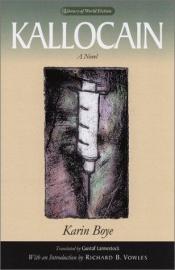Kallocain
Blurb
Kallocain is a classic 1940 Swedish dystopian novel which envisions a future of drab terror. Seen through the eyes of idealistic scientist Leo Kall, Kallocain's depiction of a totalitarian world state may draw on what novelist Karin Boye observed or sensed about the early Nazi Germany of the 1930s. An important aspect of the novel is the relationships and connections between the various characters, such as the marriage of the main character and his wife Linda Kall, and the feelings of jealousy and suspicion that may arise in a society with heavy surveillance and legal uncertainty.One of its central ideas coincides with contemporary rumors of truth drugs that ensured the subordination of every citizen to the state. Both Aldous Huxley's Brave New World and Boye's Kallocain are drug dystopias, or societies in which pharmacology is used to suppress opposition to authority. However, unlike Brave New World, where a drug is used to suppress the urge to nonconformity generally, in Kallocain a drug is used to detect individual acts and thoughts of rebellion.
Kallocain has been translated into more than 10 languages and was adapted into a television miniseries in 1981 by Hans Abramson.

 English
English Español
Español Deutsch
Deutsch










Member Reviews Write your own review
Be the first person to review
Log in to comment